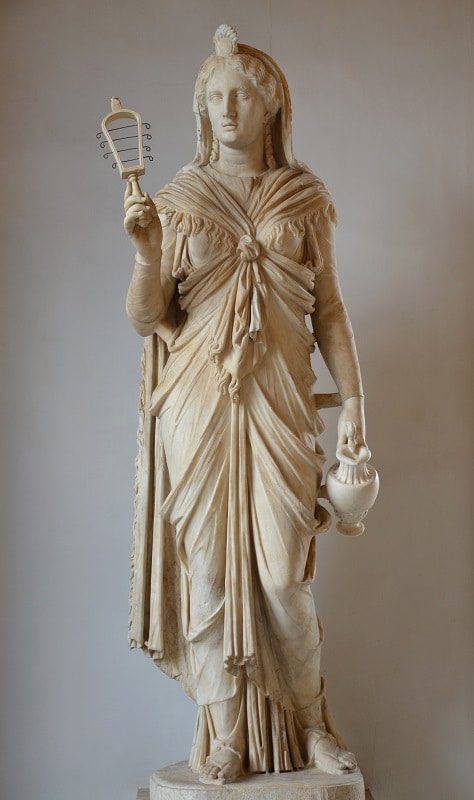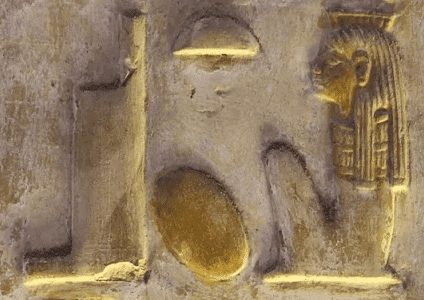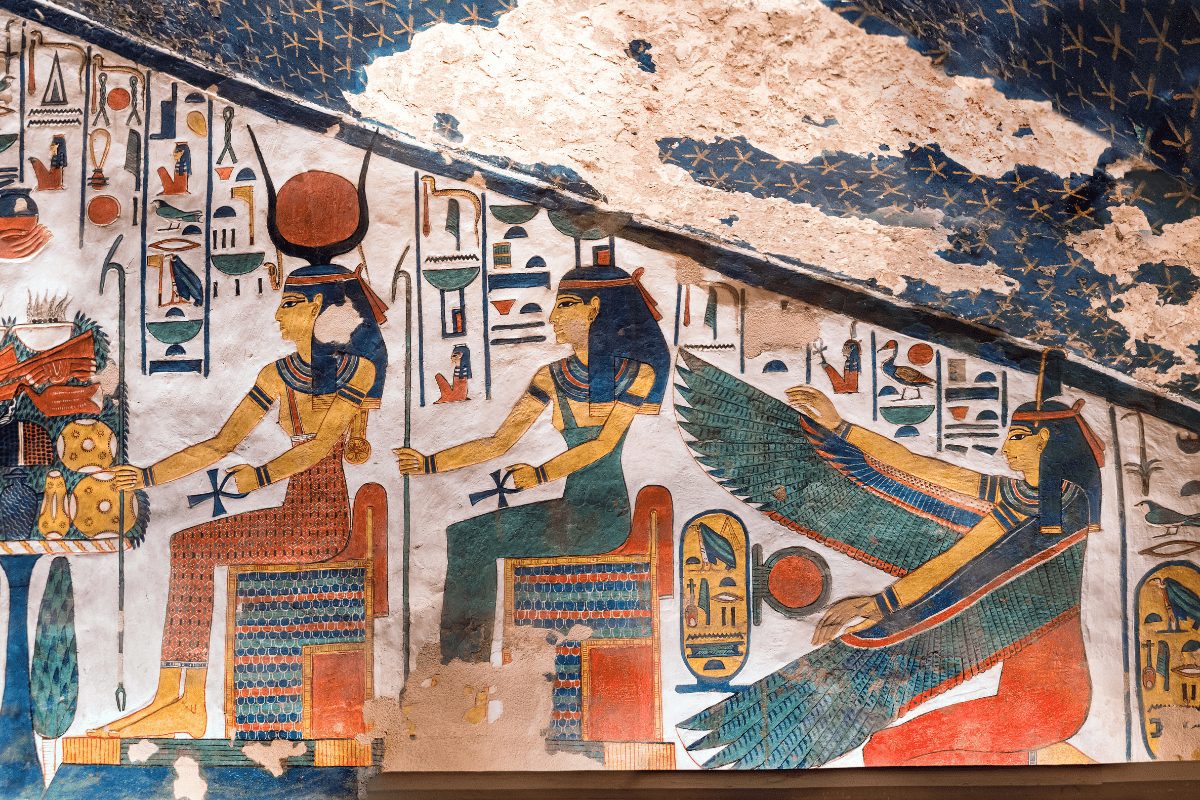During my first year as a student of the Mt Shasta Goddess Temple, I followed the Temple’s devotional calendar, a 12-month cycle of Goddess devotion. August belongs to the Egyptian goddess Isis.
I don’t connect with every goddess in the Temple’s calendar, and I didn’t expect to connect with Isis. I had tried before. I’d read a few good books, joined the Fellowship of Isis, and tried to study under Shanel Jackson, a wonderful creative and beautiful ritualist. None of it clicked. I’ve never had a strong interest in Ancient Egypt.
When August rolled around, I built an altar for Isis; my statue of her is a Roman version like the one shown below. I lit the candle every morning, made offerings, and recited the Awakening Prayer. I also purchased the Isis Oracle by Alana Fairchild and dedicated it to Isis. I offered her my devotion and listened. For two weeks, I got nothing. Then, suddenly, about mid-month, she made her presence known, fully. She hasn’t left, and neither have I.
I don’t know what changed last year. Maybe it was tapping into Mt Shasta’s current. We are again in August, and although I am building my own devotional calendar this year, the month remains dedicated to Isis.

Who is Isis?
Isis is an ancient Egyptian goddess whose worship spread throughout the Greco-Roman world. Wherever Rome went, Isis went with her and temples of Isis have been found from the Mediterranean to Arabian and Syrian provinces, Roman London, and southern Spain.
Although the rise of Christianity ended the ancient cults of Isis, she survived. I belong to the controversial school of thought that her cult influenced Christianity, particularly in the veneration of Mary. Isis also survived and thrived in the Western imagination and Western esotericism.
Lady of Ten Thousand Names

“Isis” is the Greek version of the Egyptian goddess’ name, which was mostly spelt with hieroglyphs. We don’t know exactly how ancient Egyptians pronounced it, but it was probably something like Ee-set or Aay-set. The hieroglyphic writing of her name has the sign for a throne, which gives us a clue about her associations.
Isis was a major goddess in ancient Egypt. One of the most famous myths of Isis is about Set’s killing and dismemberment of her brother-husband Osiris. Isis searched for the pieces of Osiris’ body and reassembled them. Through her love, desire, and magic, Isis restored Osiris, the god of fertility, had sex with him, and conceived their son Horus, the god of kingship.
This important myth is much more elaborate and very influential. It secures Isis’s role as a mother goddess, a wife and a mourner, and her associations with kingship and the protection of the kingdom, in afterlife beliefs and funeral rites, and with healing, magic, and wisdom. The tears she shed for Osiris were linked with rain, the sky, and the flooding of the Nile. Thus, Isis was also associated with the growth of plants.
As her cult grew beyond Egypt, Isis became a universal goddess whose dominion encompassed the sky, earth, and Duat, the realm of the dead. She was equated with a variety of other goddesses, including Aphrodite, Artemis, Demeter, Persephone, and Fortuna–goddesses of love, fertility, the Underworld, and fortune.
Isis, the universal goddess
Isis has a broad range of aspects and functions that allow her to be all things to all people. But I struggled to connect with Isis because I had a personal pantheon of goddesses that provided me with the same lessons, support, and energy. For example, Aphrodite and Ochún are my goddesses of love and desire; Kali is my goddess of the cosmos.
Isis is also a goddess of many things I don’t connect with: the throne, fertility, mourning, motherhood, the inundation of the Nile, and the sky. I considered her associations with funerary practices and the afterlife; that didn’t hit the mark last year, but I will revisit that in the future.
Isis came to me as the goddess that gets shit done. She is creative and clever. She heals and revives, outmanoeuvres Set more than once, tricks Ra into telling her his name, and surpasses every other god in magic. Where others fail or retreat, Isis triumphs. For me, she is a goddess of magic and wisdom, personal power, and rebirth to a new kind of life.
Isis, goddess of new growth
My friend Shaylee is a fellow Witch, coven mate, devotee of Hekate, and Mt Shasta student. This time last year, she approached me to help her develop the branding and website for her new tarot business. I enjoyed working on her site, Wytchy Reader, and it inspired me to update this website, start freelancing and writing again, and offer professional tarot readings.
That week, I drew the Divine Sun Child from the Isis Oracle in my weekly draw, which encouraged me to let my creativity flow. During my Full Moon ritual, I pulled the Temple of Carnelian, an encouraging card that urges you to have the courage of your convictions, have faith in yourself and your process, be fearless, and move forward with manifestation; obstacles will clear. This card draws on the protection of Sekhmet and helped me understand that Isis’s maternal devotion extends to everyone. She gets shit done, and she’s your cheerleader as you get shit done.
About the featured image: “Tomb of Nefertari, QV66, Valley of the Queens” by kairoinfo4u is licensed under CC BY-NC-SA 2.0.

